Without a doubt, door signage is an effective tool to properly organise a public space. Obviously, signs should be harmoniously integrated with understandable interior planning and design. But keep in mind that even the best planning might still cause difficulties for visitors who enter the place for the first time.
In trying to solve this problem, humanity has evolved to the concept of door and wall signs. Accessibility is their ultimate goal to achieve. However, requirements for accessibility might be different. Therefore, different types of signs might be used to satisfy those requirements. Let us have a look at how door signs affect accessibility.
“Employees Only Signs” for Access Limitation
Some areas should not be accessible publicly. Even in public places, there are some areas in which only certain specialists can be authorized. By this, we mean that you should not allow public access to the electricity booth, for example, or any other area where potentially dangerous equipment might be stored. In the business context, some areas might have restricted access due to valuable commercial information stored there.
“Employees only” signs are the best solution to this issue. These plaques can clearly communicate the message that unauthorized individuals cannot enter the place.

If you have some extra message to deliver, you might need to customise your door signs, which is possible with Bsign services.
ADA-Compliant Signs for Access Promoting
According to the law, rooms and areas that serve the basic amenities should be accessible to all visitors, regardless of their status within the company or their physical abilities or disability. Since basic wayfinding might be a challenge for those who suffer from physical impairments, public spaces have to ensure accessibility of permanent areas with ADA-compliant signs.
ADA-compliant signs are usually used to indicate the most important entry and exit points as well as some permanent areas like restrooms. However, you can enhance your door signage with other ADA-driven features in order to promote ultimate accessibility to everyone. The most common types of ADA-compliant door signs in public spaces are:

- Handicap restroom signs;
- ADA restroom signs;
- ADA staircase signs;
- ADA-compliant entry/exit signs;
- ADA kitchen signs.
Wayfinding Signs for Ultimate Access
Can you think of a simpler way to find a room than simply following the direction of an arrow pointing to this room? We doubt you can. This is evident when you consider how often wayfinding signs can be seen in public spaces. They are quite simple and effective at the same time. A wayfinding or directional sign with an arrow is the easiest-to-grasp index.
Keep in mind that efficient space organization is possible only if all the necessary signs are at their places and are used in combination with each other. By keeping that in mind, you will be able to devise an efficient wayfinding system that does not make your news visitors face uncomfortable challenges.
